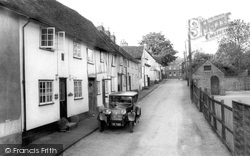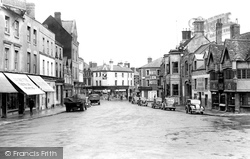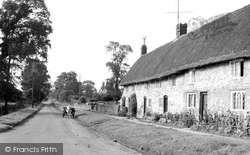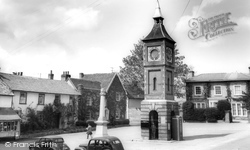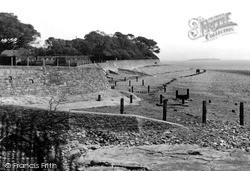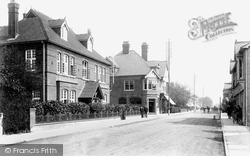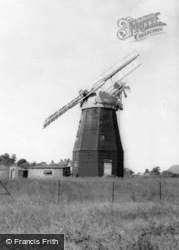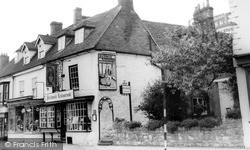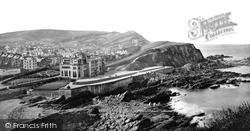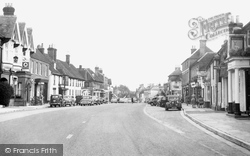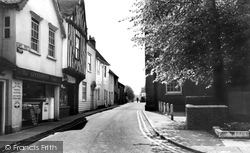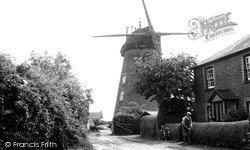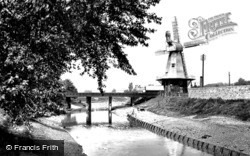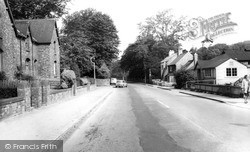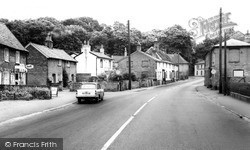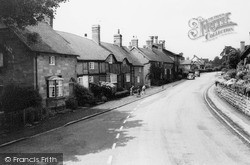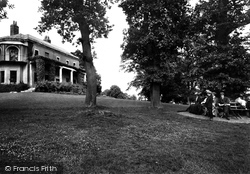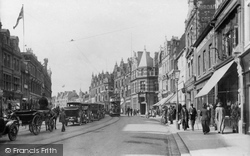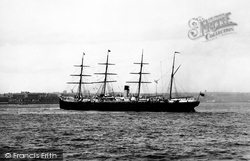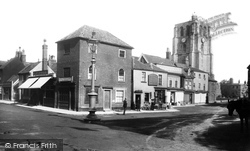Captions
388 captions found. Showing results 221 to 240.
At the end is Red House, a Tudor farmhouse with a brick front of c1715.
Plaster, timber, brick and stone have all been employed to provide an interesting variety.
We can almost feel the peace and tranquillity typified by a road deserted apart from a solitary horse-drawn delivery cart, standing near an attractive row of brick-built thatched cottages.
The clock tower was built of red and white brick in 1864.
The slipway was privately owned, but with perhaps too little investment the reinforced concrete sections had begun to deteriorate and break up, with the metal rods exposed and rusting.
The building on the left was the Constitutional Club; it was built in a Bedford Park Domestic Revival style around 1890 with steep tiled roofs and much use of brick banding.
Cattell's Mill is a black-tarred weatherboarded smock windmill on an octagonal single-storey brick base.
Watling Street has a good range of buildings, mostly dated 18th and 19th century, built in a mix of materials - stone, brick and render.
The imposing yellow brick Gothic Revival building, with 210 rooms and a 1,000ft terrace, put Ilfracombe in the first rank of resorts when it was opened on 15 May 1867.
Further on, the three-storey brick building has been a draper's shop for some 170 years; its name Commerce House records that this was where Odiham's first bank opened in 1806.
The substantial building behind the trees is Billericay church, which was rebuilt in 1780, though retaining its fine 15th-century brick tower.
In 1775 a brick tower-mill was built near the crossroads by John Matchett, a Colchester millwright.
The brick and white weatherboarded smock mill still stands in Mill Lane on the banks of the River Tillingham, though it is now converted for use as a guest house.
On the left is the end of a long and attractive terrace of Victorian brick houses, which still survives.
The doors and windows have been altered on the next pair of cottages, whilst the white Rosemary Cottage and the brick gable end beyond remain unchanged.
The houses in this scene are typical of Stoneleigh, which retains a pleasant mixture of brick, timber and local red sandstone.
The house, originally a brick one of 1759, was extended and given the Regency stucco villa treatment in the early 19th century.
Beyond the bank with its pyramid-roofed tower are the elegant terra cotta and brick buildings flanking the entrance to Queen Victoria Street.
Laid up at Birkenhead in 1890, she was taken to Preston for breaking up in 1899.
The tall brick building was Thomas Self, greengrocer and market gardener; to the left was Clement Poll, butcher.




